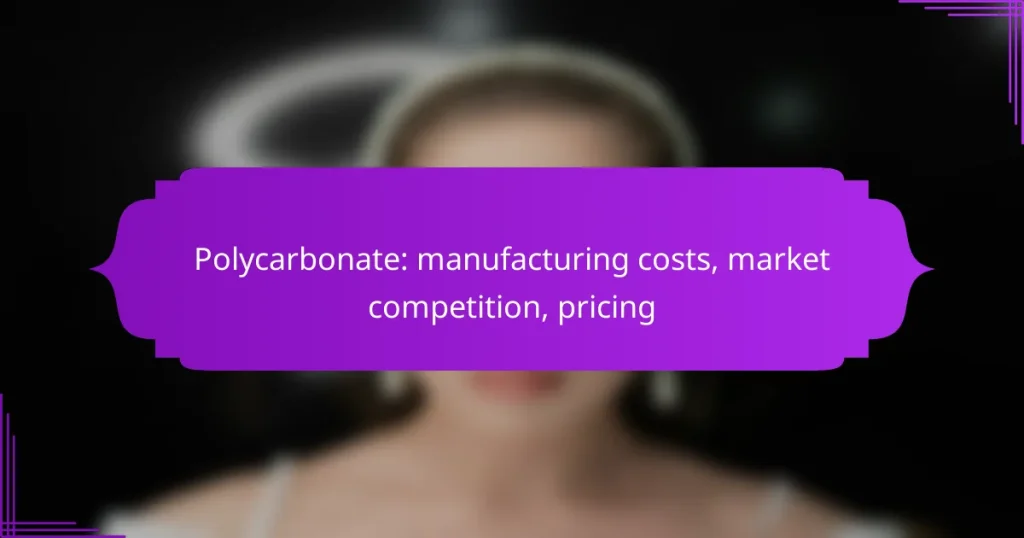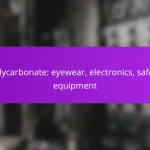Polycarbonate manufacturing costs are shaped by factors such as raw material prices, labor, and energy consumption, which are crucial for businesses to understand for effective cost estimation. Market competition plays a vital role in influencing pricing, as increased competition can lead to lower costs and spur innovation. Currently, pricing trends show a moderate increase due to rising demand and ongoing supply chain challenges, suggesting that prices may remain volatile in the near future.
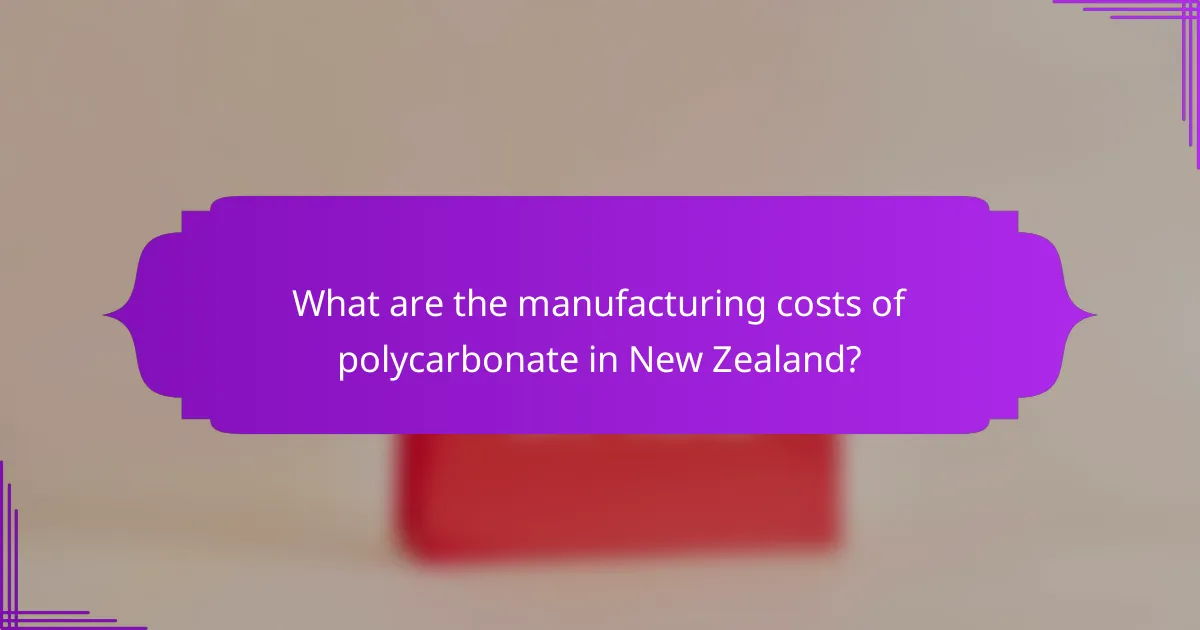
What are the manufacturing costs of polycarbonate in New Zealand?
The manufacturing costs of polycarbonate in New Zealand are influenced by several key factors, including raw material prices, labor expenses, and energy consumption. Understanding these components can help businesses estimate overall production costs and make informed decisions.
Raw material costs
Raw material costs are a significant portion of polycarbonate manufacturing expenses. The primary raw materials include bisphenol A (BPA) and phosgene, which can fluctuate in price due to market demand and supply chain issues. In New Zealand, sourcing these materials may involve additional costs related to import tariffs and logistics.
Labor and overhead expenses
Labor costs in New Zealand can vary based on the region and the skill level required for polycarbonate production. Overhead expenses, which include facility maintenance and administrative costs, also contribute to the overall manufacturing costs. Companies should consider investing in training to improve efficiency and reduce long-term labor costs.
Production scale effects
The scale of production significantly impacts manufacturing costs. Larger production runs typically lead to lower per-unit costs due to economies of scale. Small to medium-sized manufacturers may face higher costs per unit, making it essential to evaluate production capacity against market demand to optimize profitability.
Energy consumption factors
Energy consumption is a critical factor in the manufacturing process of polycarbonate. The production involves high-temperature processes that require substantial energy input. Companies in New Zealand should explore energy-efficient technologies and renewable energy sources to mitigate costs and reduce environmental impact.
Transportation costs
Transportation costs can affect the overall manufacturing expenses for polycarbonate, especially if raw materials are imported. Shipping fees, fuel prices, and logistics management play a crucial role in determining these costs. Businesses should evaluate local suppliers to minimize transportation expenses and enhance supply chain efficiency.
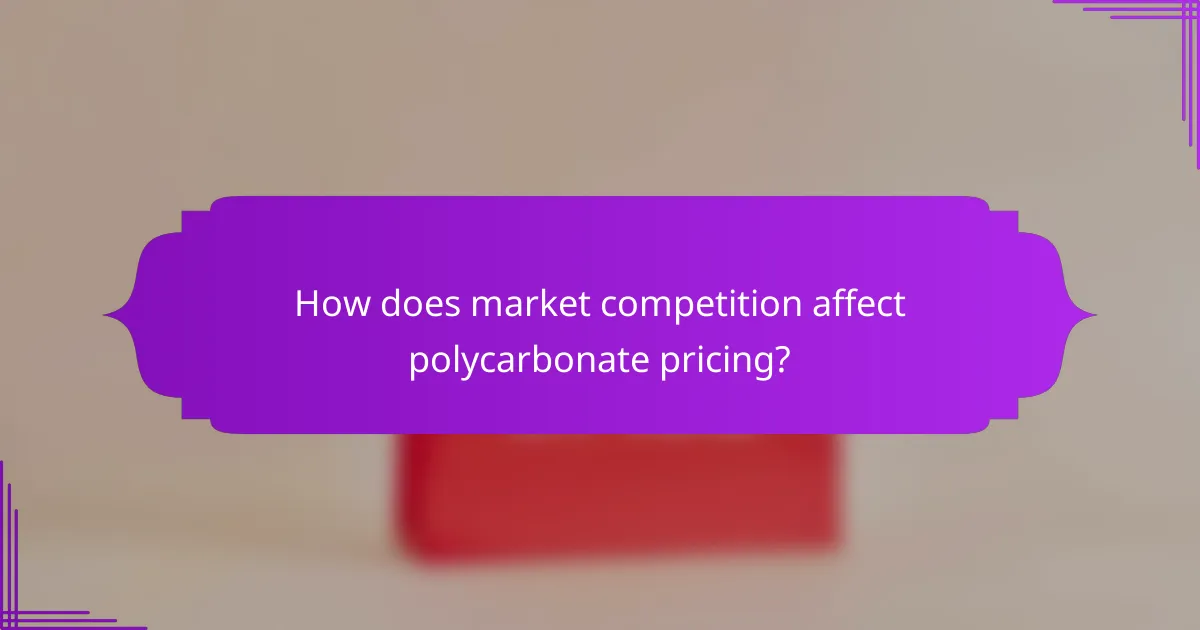
How does market competition affect polycarbonate pricing?
Market competition significantly influences polycarbonate pricing by driving costs down and encouraging innovation. As more manufacturers enter the market, prices tend to stabilize or decrease due to increased supply and competitive pricing strategies.
Key competitors in the New Zealand market
In New Zealand, several key players dominate the polycarbonate market, including global brands like Sabic and Bayer, as well as local manufacturers. These companies compete on quality, pricing, and service, impacting overall market dynamics.
Local firms often focus on niche applications, providing tailored solutions that can challenge larger competitors. This competition fosters a diverse range of products available to consumers, catering to various needs from construction to automotive applications.
Market share distribution
The market share distribution in New Zealand reflects a mix of international and domestic companies, with larger brands holding a significant portion. Typically, the top three to five companies account for a majority of the market, while smaller firms capture specific segments.
Understanding market share is crucial for pricing strategies, as dominant players can influence overall pricing trends, while smaller competitors may offer lower prices to gain traction in the market.
Pricing strategies of major brands
Major brands in the polycarbonate market often employ various pricing strategies, including cost-plus pricing and competitive pricing. Cost-plus pricing involves calculating production costs and adding a markup, while competitive pricing focuses on matching or undercutting rivals’ prices.
Additionally, brands may offer volume discounts or promotional pricing to attract bulk buyers, particularly in industries like construction. This strategic pricing helps maintain market presence and can lead to price wars, impacting overall profitability.
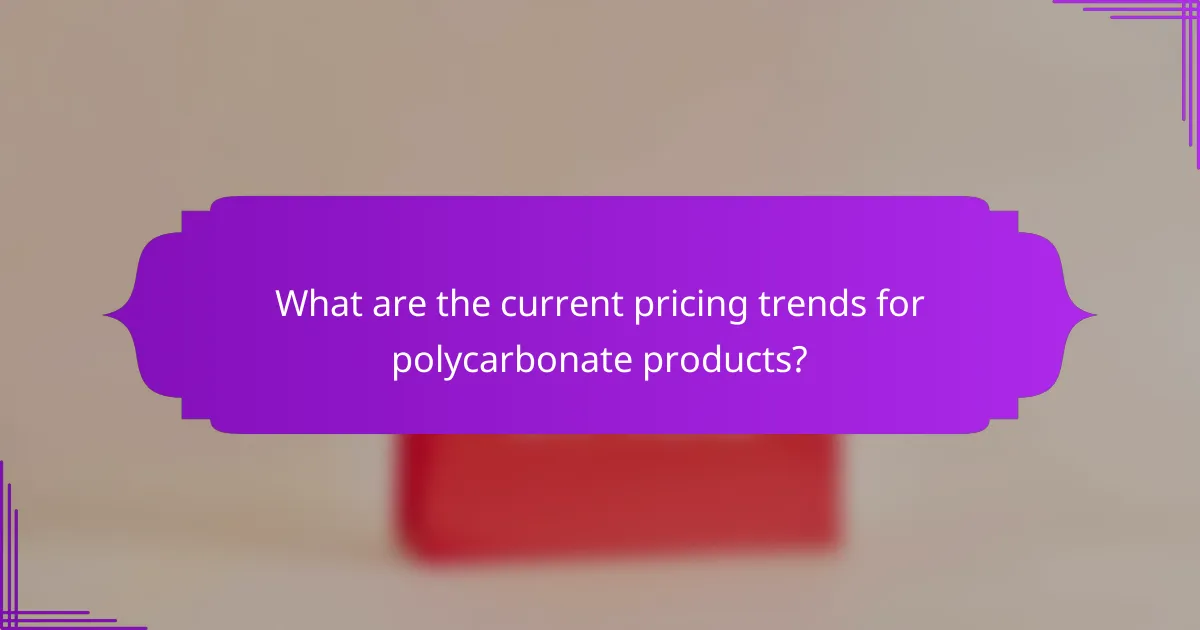
What are the current pricing trends for polycarbonate products?
Current pricing trends for polycarbonate products indicate a moderate increase in costs due to various market factors. As demand rises and supply chain challenges persist, prices are expected to remain volatile in the near term.
Average pricing per unit
The average pricing for polycarbonate sheets typically ranges from $2 to $5 per square foot, depending on thickness and quality. Specialty grades or those with enhanced properties can command higher prices, sometimes exceeding $10 per square foot.
For molded polycarbonate products, prices can vary significantly, with small components often priced between $0.50 and $3 each, while larger items may reach $20 or more. Buyers should consider bulk purchasing to secure better rates.
Price fluctuations over the past year
Over the past year, polycarbonate prices have experienced fluctuations, generally trending upwards due to increased demand in sectors like automotive and construction. Prices have risen by approximately 10-15% in many regions, reflecting both raw material costs and manufacturing challenges.
Seasonal demand also plays a role, with prices typically peaking during the summer months as construction projects ramp up. Monitoring market reports can help buyers anticipate these changes and plan purchases accordingly.
Impact of global supply chain issues
Global supply chain issues have significantly impacted polycarbonate pricing, leading to increased costs and delays. Disruptions caused by the pandemic, geopolitical tensions, and transportation bottlenecks have made sourcing materials more challenging, driving prices higher.
Manufacturers are facing higher shipping costs and longer lead times, which can affect pricing strategies. Buyers should factor in these potential delays when planning their orders and consider alternative suppliers or materials to mitigate risks.
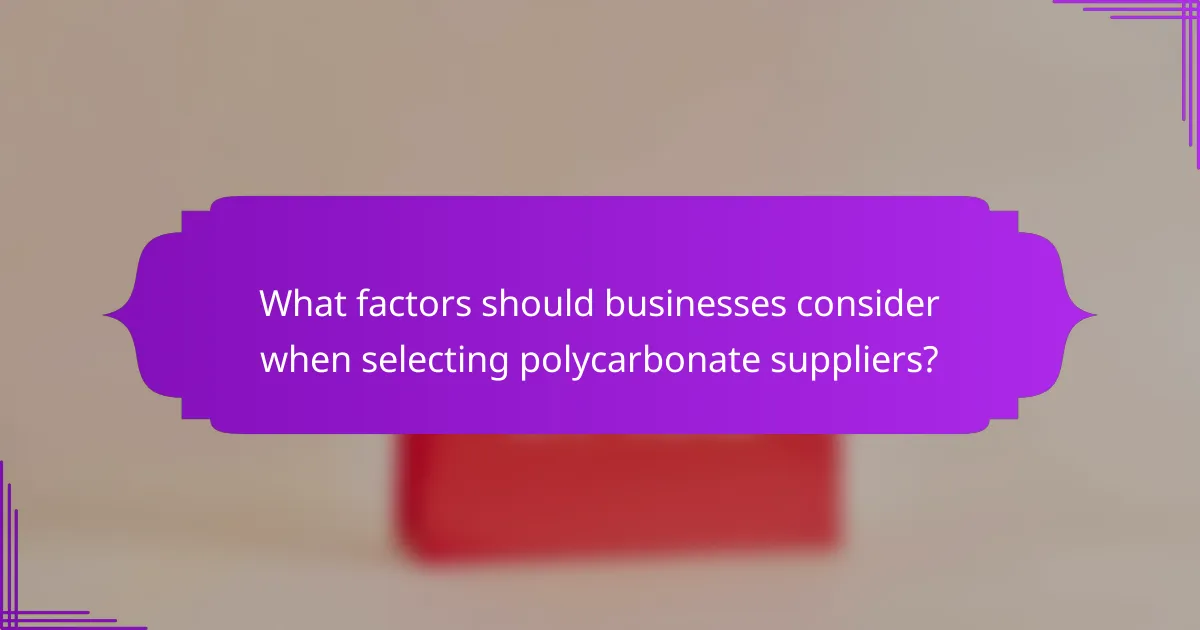
What factors should businesses consider when selecting polycarbonate suppliers?
Businesses should consider supplier reliability, reputation, and quality certifications when selecting polycarbonate suppliers. These factors can significantly impact the overall quality of the product, delivery timelines, and compliance with industry standards.
Supplier reliability and reputation
Supplier reliability is crucial for ensuring consistent product availability and timely deliveries. A reliable supplier minimizes production disruptions and helps maintain steady operations. Businesses should research potential suppliers by checking reviews, testimonials, and industry ratings.
Reputation can often be gauged through word-of-mouth recommendations and online presence. Engaging with industry peers or attending trade shows can provide insights into a supplier’s standing in the market. Aim to partner with suppliers known for their dependability and customer service.
Quality certifications and standards
Quality certifications indicate that a supplier adheres to specific industry standards, which can affect the performance and safety of polycarbonate products. Look for certifications such as ISO 9001 or compliance with ASTM standards, which ensure that the materials meet rigorous quality benchmarks.
Additionally, consider the supplier’s ability to provide documentation for their products, including test results and compliance statements. This transparency can help businesses avoid costly issues related to subpar materials and ensure that the polycarbonate used meets necessary regulatory requirements.

How can companies optimize their polycarbonate procurement processes?
Companies can optimize their polycarbonate procurement processes by implementing strategic sourcing, leveraging bulk purchasing, and establishing strong supplier relationships. These strategies can lead to cost savings and improved supply chain efficiency.
Bulk purchasing advantages
Bulk purchasing of polycarbonate can significantly reduce costs per unit, as suppliers often offer discounts for larger orders. This approach allows companies to take advantage of economies of scale, which can lower overall procurement expenses.
Additionally, bulk buying can ensure a stable supply of polycarbonate, minimizing the risk of shortages and price fluctuations. Companies should assess their storage capabilities and demand forecasts to determine appropriate order sizes that balance cost savings with inventory management.
When considering bulk purchases, it’s essential to negotiate terms with suppliers. Establishing long-term contracts can lock in prices and provide predictable budgeting, which is crucial in a competitive market where polycarbonate prices can vary widely.
